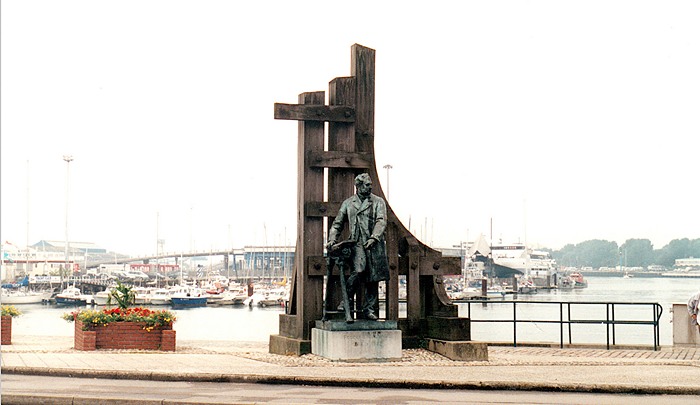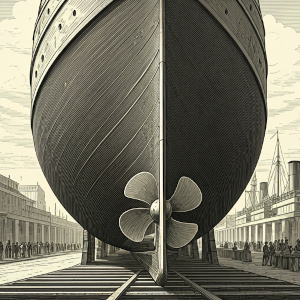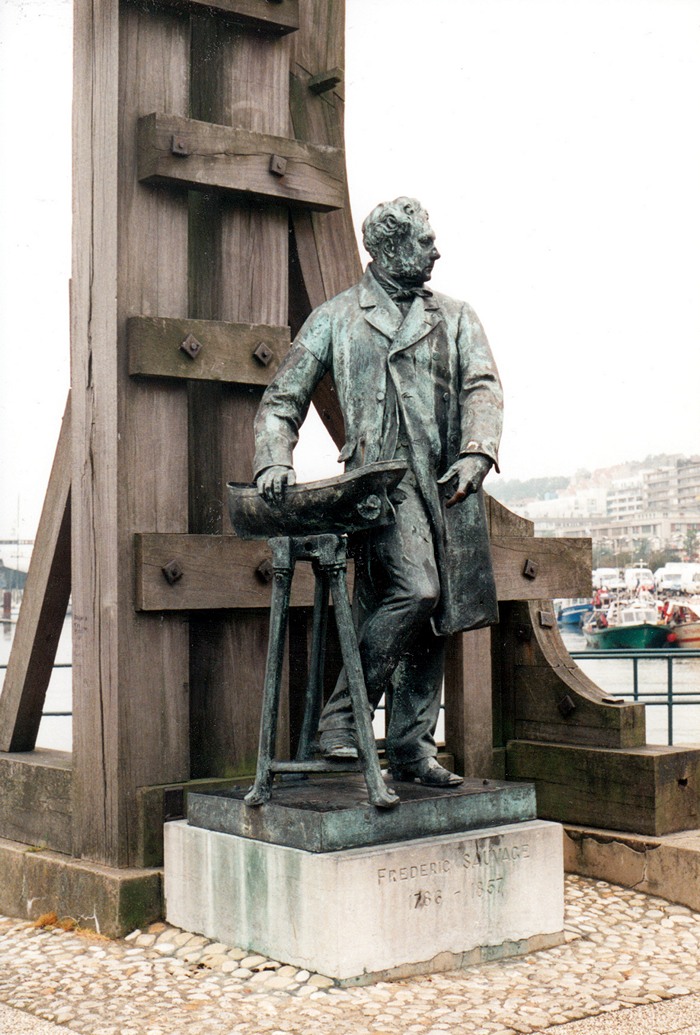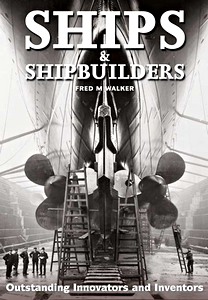
TMB Blog - Maritime
Frédéric Sauvage - French Pioneer of the Ship Propeller
While visiting the French town of Boulogne-sur-Mer, we discovered an intriguing statue on the Pont Marguet, the bridge that divides the local marina in two. A bronze gentleman holds a ship model in his right hand. It is a belated tribute to Frédéric Sauvage, the French pioneer of the ship propeller.
Frédéric Sauvage was born in 1786 in Boulogne-sur-Mer. Technology and ships were his passion. In his younger years, he served in the engineering department of the French army. However, he missed the familiar sea air, the screeching of seagulls, and the smell of freshly caught fish.
Ship Designer
Frédéric returned to the coast and became a designer of seagoing ships. After Boulogne-sur-Mer, he lived in the fishing town of Honfleur. He later moved to Le Havre, the location of large shipyards. Meanwhile, he invented various new machines and instruments, including a special saw for marble.
In 1832, Sauvage obtained a patent for his greatest invention, a ship propeller for steamships. This propeller was spiral-shaped, like the screw of Archimedes. Later, improved ship propellers would have actual blades.
The few steamships operating at the beginning of the 19th century had large rotating paddle wheels on both sides. On a loaded ship, these giant paddle wheels sat deep in the water, and propulsion was fairly effective. However, if the ship was empty or the coal supply ran low, the wheels came to the surface, and the boat barely moved forward. In heavy swells, the wheels also tended to spin ineffectively.
Because Sauvage’s propeller always remained underwater, this invention was promising, especially for the French Navy. It was decided to build a new ship, Le Napoléon. Sauvage was responsible for the propeller, while the shipbuilder Augustin Normand would construct the rest of the warship.

While the first ships had a kind of Archimedes’ screw, ship propellers soon took on their familiar form (JvL/Gemini AI).
In Prison
Unfortunately, both men were quite stubborn, and their personalities clashed. They disagreed on many matters and even frequently threatened each other with lawsuits. To make matters worse, while Frédéric Sauvage was a brilliant inventor, he was a poor financier. For thirteen years, he had invested all his money in developing his inventions. Just when their qualities could be proven, his money ran out, and he was imprisoned in Le Havre for outstanding debts. There he sat in a small cell while his brainchild embarked on its maiden voyage...
On June 21, 1843, Le Napoléon sailed from Le Havre to Cherbourg and back. This first voyage of a propeller-driven steamship was a great success. The naval ship reached a speed of over 13 knots. Everyone cheered when Le Napoléon returned to Le Havre. Augustin Normand even received a high distinction from King Louis-Philippe.
And Frédéric Sauvage? Thanks to the efforts of a few friends, he was able to leave prison some time later. However, there was no distinction for him. His patent expired, after which anyone could use his invention. He was poor, unrecognized, and discouraged. In 1857, Frédéric Sauvage died unknown in a mental institution in Paris. His grave is located in Boulogne-sur-Mer.
Tug-of-War
Meanwhile, the rise of the ship propeller began. Initially, there were both supporters and skeptics. However, the final doubts were dispelled in 1845 during an interesting experiment by the British Royal Navy. Two comparable, equally powerful ships, the HMS Rattler with a propeller and the HMS Alecto with paddle wheels, engaged in a “tug-of-war,” as the British call it.
In front of many spectators, the HMS Rattler easily pulled the fully resisting HMS Alecto backward at a speed of 2.5 knots. The ship propeller had definitively won!
When several countries claimed the invention of the ship propeller, the French remembered Frédéric Sauvage again. In 1881, he was honored with a beautiful bronze monument in the middle of the harbor of his birthplace, Boulogne-sur-Mer. A belated tribute to a remarkable maritime inventor!

The statue for Sauvage in 2000. Poor and misunderstood he died, this extraordinary maritime inventor (JvL).
Text and photos: © 2000-2025 Johan van Loon. This article previously appeared in Belgian yachting magazine "Varen".
Further reading:

Ships and Shipbuilders - Pioneers of Design and Construction
Fred M. Walker | English | hardcover | 256 pages | 2010

Battleships of the World - Struggle for Naval Supremacy 1820-1945
John Fidler | English | hardcover | 128 pages | 2016

French Warships in the Age of Steam 1859-1914 - Design, Construction, Careers and Fates
Stephen S. Roberts | English | hardcover | 432 pages | 2022

British Battleships of the Victorian Era
Norman Friedman | English | hardcover | 400 pages | 2017
